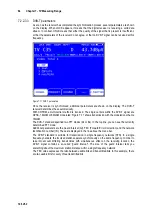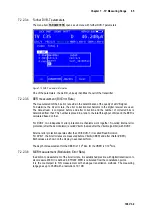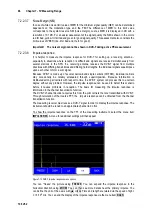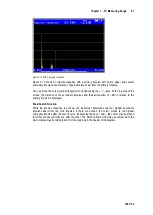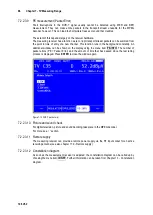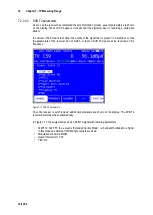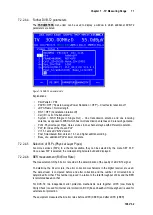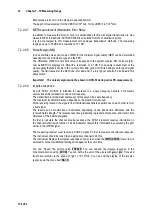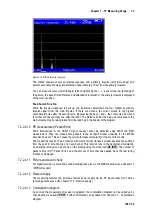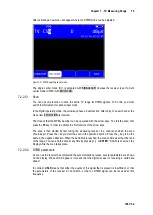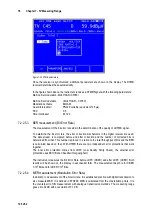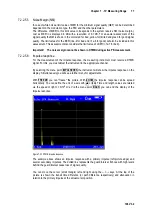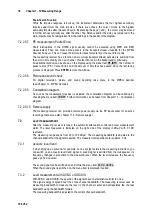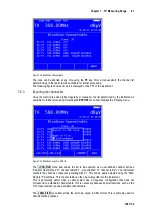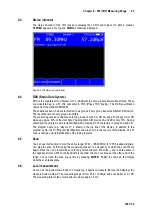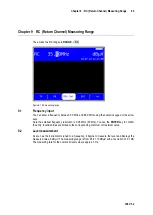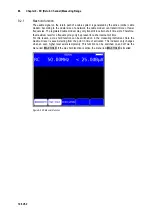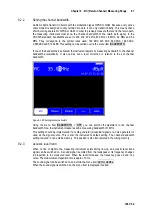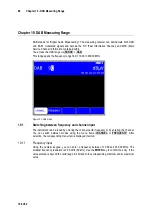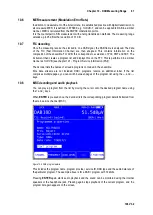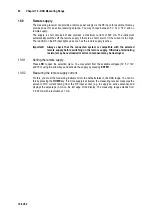
78
Chapter 7 - TV Measuring Range
106 V3.2
Peak-Search Function
While the impulse response is built up, the instrument determines the four highest secondary
impulses apart from the main impulse. If there are echoes, the cursor moves to the highest
secondary impulse after the second cycle. By pressing the keys ↑ and ↓ the cursor may be moved
to further echoes cyclically one after the other. The distance and/or the delay as compared to the
main impulse may be taking taken from the readings in the header of the diagram.
PE measurement (Packet Error)
7.2.2.5.7
Short interruptions in the DTMB signal usually cannot be detected using MER and BER
measurement. They can make entire packets in the transport stream unusable for the MPEG
decoder, however. This can cause the picture to freeze temporarily or the sound to crackle.
The measuring receiver has a function where corrupt transport stream packets are summed from
the point in time of entry of a new channel. This function runs in the background continuously.
An additional window can be shown on the display using the menu item
PE-INFO
. The number of
packet errors (PE = Packet Error) and the amount of time that has passed since the last tuning
process is displayed. Press
ENTER
to close the window.
Picture and sound check
7.2.2.5.8
For digital television, picture and sound decoding take place in the MPEG decoder
(see Chapter 12 - MPEG Decoder).
Constellation diagram
7.2.2.5.9
As soon as the measurement receiver is adjusted, the constellation diagram can be called up by
choosing the menu item
CONST
. Further information can be taken from Chapter 13 - Constellation
Remote supply
7.2.2.5.10
The measuring receiver can provide a remote power supply via the RF input socket for an active
receiving antenna (see also chapter 11.9 - Remote supply).
7.3
Level measurement
After the measuring receiver is tuned, the automatic attenuation control and level measurement
starts. The level measured is indicated on the right side of the display in dBµV with 0.1 dB
resolution.
The measuring range spans from 20 to 120 dBµV. The measuring bandwidth is adjusted to the
channel bandwidth of the signal measured. The measurement repetition rate is approx. 3 Hz.
Acoustic level trend
7.3.1
If when lining up an antenna, for example, no line of sight exists to the measuring instrument, you
can switch on an acoustic level trend signal. A sound signal is emitted from the loudspeaker. Its
frequency changes in proportion to the measured level. When the level increases, the frequency
goes up and vice versa.
The sound signal can be switched on and off via the menu item
ACOU. LEVEL
.
When the sound signal is switched on, the menu item is displayed inverted.
Level measurement with DVB-C or DOCSIS
7.3.2
With DVB-C and DOCSIS, the spectra of the signals have characteristics similar to noise.
The signal energy is spread over the entire channel bandwidth. The measuring receiver uses its
measuring bandwidth to measure the level in the channel center and extrapolates the channel
bandwidth using the bandwidth formula.
The measuring bandwidth is adjusted to the current channel bandwidth.

